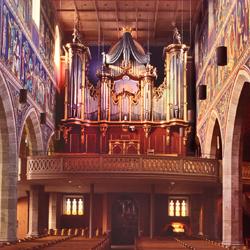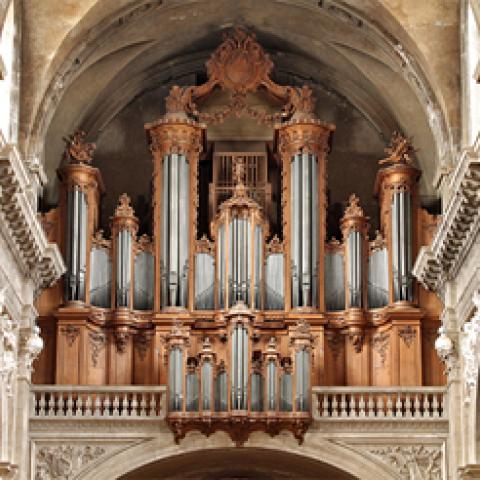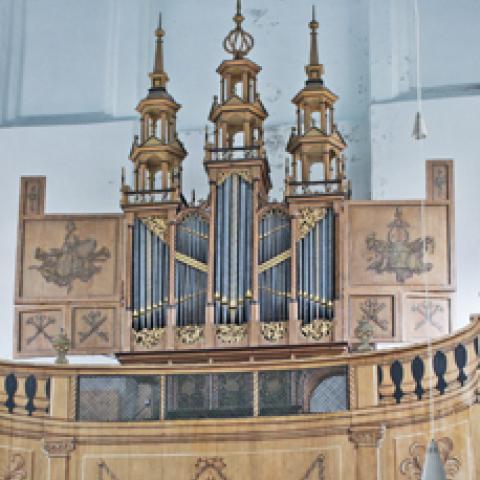
Historic Organ Study Tours (HOST) announces its summer 2018 tour to Switzerland: From Geneva to Zürich and Beyond, August 23–September 1.
This 25th anniversary tour includes stops in Lausanne, Geneva, Vevey, Fribourg, Bern, Basel, Olten, and Zürich, visiting organs from the 17th through the 20th centuries, including the Alain family residence organ.
Organ visits will be led by Christophe Mantoux. Tour directors are Bruce Stevens and William T. Van Pelt.
For information: https://ravencd.com/merchantmanager/index.php?cPath=56,
bbstevens@erols.com or 804/355-5876.
Stadtkirche, Winterthur, Switzerland, 1888 E. F. Walcker organ restored in 1984 by Th. Kuhn (photo credit: William T. Van Pelt)






